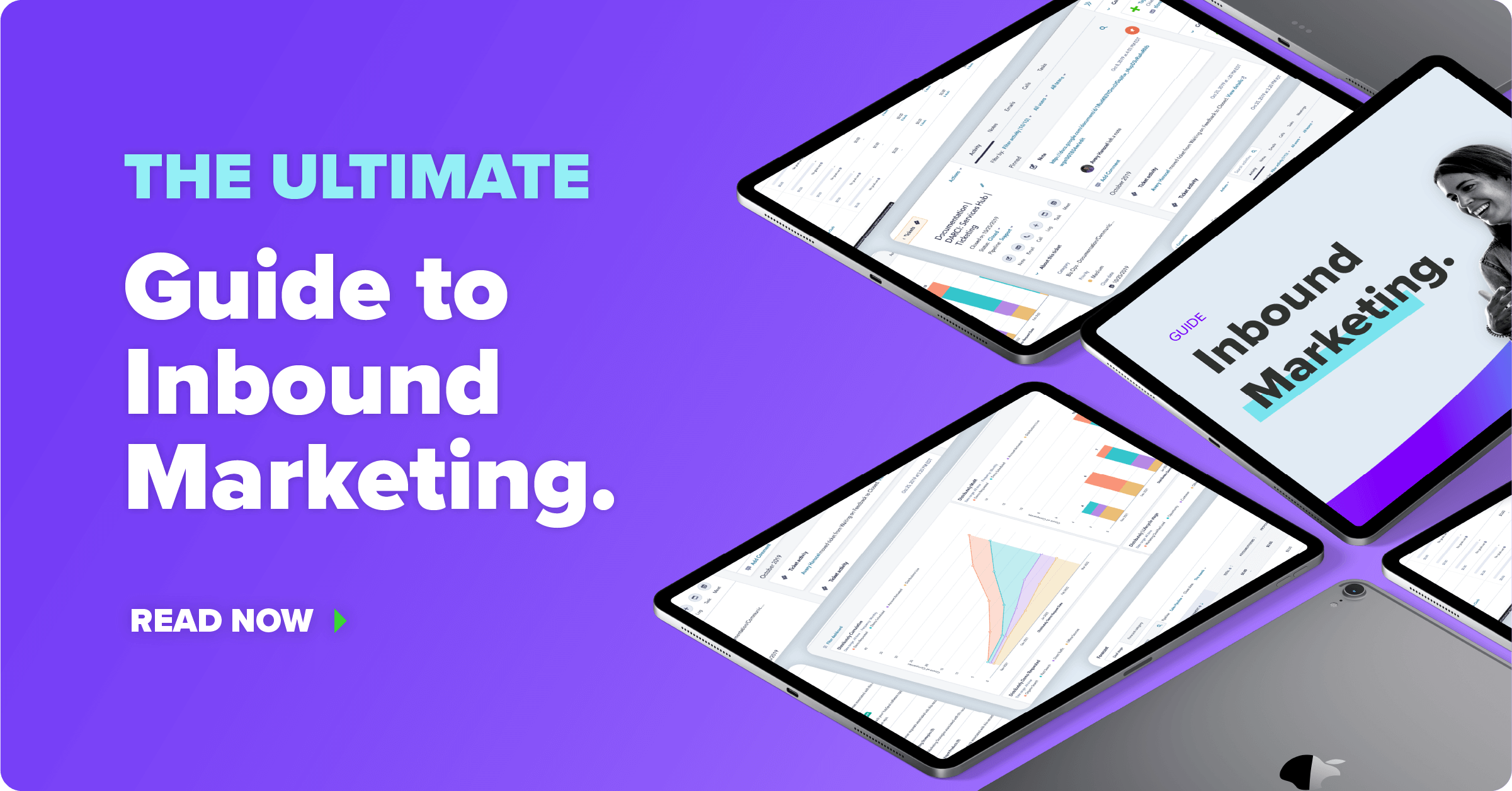Love Your Leads: 7 Lead Nurturing Best Practices
-6.png)
A prospect beginning to express interest in your company does not mean they’re actually ready to buy from you, and in B2B, where sales cycles tend to be longer and the stakes are higher, it’s extra important to educate your prospect before trying to sell to them. In order to provide value to those contacts so they’ll eventually want to become your customers, you need to nurture them.
Lead nurturing is the way that a company develops a relationship with their contacts at different stages of the buyer’s journey. It can incorporate many different touchpoints, but the goal is ultimately to guide leads toward becoming happy customers.
If you don’t provide your leads with information about their challenge and how your product or service can solve for it, they might not progress through the stages of the buyer’s journey or be educated enough about your solution to consider it a viable option. This can result in them being unprepared for a conversation with sales, making it less likely they’ll close into customers.
So, by not educating and nurturing the contacts you have coming in, you’re risking revenue for your company.
To keep that from happening, here are seven lead nurturing best practices.
1. Set Goals
As you start working on a lead nurturing strategy, you want to start with your goals, just like with anything else.
Lead Nurturing can look differently depending on what you’re trying to achieve. Whether you’re trying to get leads from one lifecycle stage to another, re-engage contacts who’ve gone dormant or accomplish something else, your goal will impact not just how you go about nurturing those leads but also what metrics will indicate how successful you were.
For example, if your goal is to progress leads linearly through the funnel, then your primary key performance indicator (KPI) would be the percentage of leads you nurtured who converted to the next stage.
If your goal is to re-engage contacts, then your KPI would be the percent of unengaged contacts who are no longer unengaged.
Another goal could be lead enrichment. You can simultaneously be sending really helpful, relevant lead nurturing content while also trying to gather more information about the contacts already in your database so you can then be more targeted. The KPIs for an enrichment nurture campaign would be more qualitative, since you’ll analyze how much information you were able to gather and whether that new data was useful.
If you use HubSpot for your marketing automation, you can set goals for your lead nurturing directly in the workflow tool. For example, if you create an email drip campaign to nurture leads from MQL to SQL, then you could set that as the goal in the tool in order to more easily analyze your performance.
2. Segment Your Leads
The goal of lead nurturing is to provide value to your contacts, and if you treat everyone the same, it’ll be difficult to do that. Instead, you should break your database into smaller groups so that you can serve targeted, contextually relevant content based on what you know about a lead.
You can segment based on demographics and firmographics, behavior patterns, buyer persona, lifecycle stage or some combination of all of those factors. By doing so, you can directly speak to the challenges and pain points an individual has, as opposed to sending them generic information.
To create segment nurture campaigns, you can create lists of contacts who meet certain criteria or use specific characteristics to enroll leads into an automated workflow.
3. Don’t Use Generic Personalization
Lead nurturing workflows can be built around very specific individual behaviors. You can trigger workflows based on specific CTAs being clicked, a series of pages being visited or other behaviors a lead has exhibited.
Since technology lets you get more granular, you should take advantage of that and let each prospect’s actions inform the experience they receive.
Sending the same experience to every single person at a lifecycle stage isn’t truly personalized, and neither is just adding someone’s name or company into an otherwise templated email.
4. Provide Relevant Content
The content you use to nurture your leads should be applicable not just to who they are, but also where they are in their buyer’s journey.
You shouldn’t immediately send a new contact everything there is to know about your company and what you do. The content you use to nurture prospects shouldn’t be a sales pitch. It shouldn’t be about your company. It should be as helpful for the lead as possible.
If a lead is at the beginning of their buyer’s journey, you should send them top-of-the-funnel content that helps educate them about their challenge. Then once they’ve progressed a little bit, you can start sending them content about different solutions.
5. Think Beyond Email
Consider all the touches a lead can have with your company. The lead nurturing process doesn’t need to occur solely through email.
Instead, you can look to incorporate paid retargeting campaigns, smart content and even conversational marketing playbooks that target leads at specific stages in their buyer’s journey.
If a visitor came to your website, viewed a couple specific pages, left and then returned a few days later, you can use smart content or chatbot to welcome them back or reference their previous behavior. You can use their past behavior to serve up the next step instead of re-presenting what they’ve already seen.
The same logic can be applied to paid retargeting.
Taking a multi-channel approach to lead nurturing creates a more well-rounded experience for your contacts. You can deepen their relationship with your brand and company by meeting your prospects where they are.
6. Be Mindful of Cadence
Timing is everything. If you reach out too frequently, a lead might feel overwhelmed. But, if you wait too long in between communications, a prospect might lose momentum or decide to look for answers elsewhere instead. That’s why it’s important to set a cadence for your nurturing outreach and be aware of what other communications a prospect might receive from your company.
Sales reps follow a cadence while following up with opportunities, but a lot of the time the marketing team also still has touches with those contacts while that happens. Aligning your marketing and sales team and taking a more holistic approach to communications will help you make sure each prospect receives all the information they need without getting overwhelmed.
There’s no magic cadence or magic number of days you should wait in between touches that’ll work for everyone. It’s important to know your audience and analyzing your campaign performance to see what works best for your audience
Testing and optimizing based on your contacts’ behaviors is the only way to determine the best cadence.
7. Measure Success and then Improve Your Campaigns
Did your nurture campaign accomplish what you wanted it to? If so, evaluate your efforts so you can duplicate those results in the future and come up with ideas for how you can improve your strategy even further.
If you didn’t meet your goal, dig into where it fell short so that you can determine next steps to make it work better. Maybe your segmentation wasn’t targeted enough. Or it’s possible you didn’t have enough content offers for prospects to convert on.
Whatever the case, learn from your attempts and try again.
The Takeaway
You can’t just generate leads. If you fail to nurture them, you miss the opportunity to connect with contacts and convert them into customers. Plus your leads will be missing out too.
They entered your funnel because they were interested in your company. They raised their hand to hear from you. Not nurturing them is like inviting them to a party and then not talking to them.
This post was originally published February 14, 2017.
Liz Crawford
Liz is a Senior Inbound Strategist at New Breed. Fueled by copious amounts of tea, she creates and executes plans that help our clients reach their goals. When she’s not in the office, you can probably find her rock climbing or visiting one of Vermont’s many breweries.





